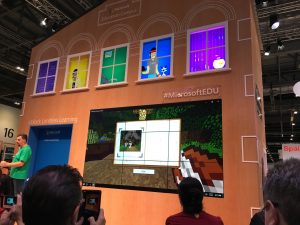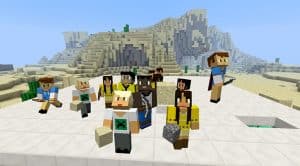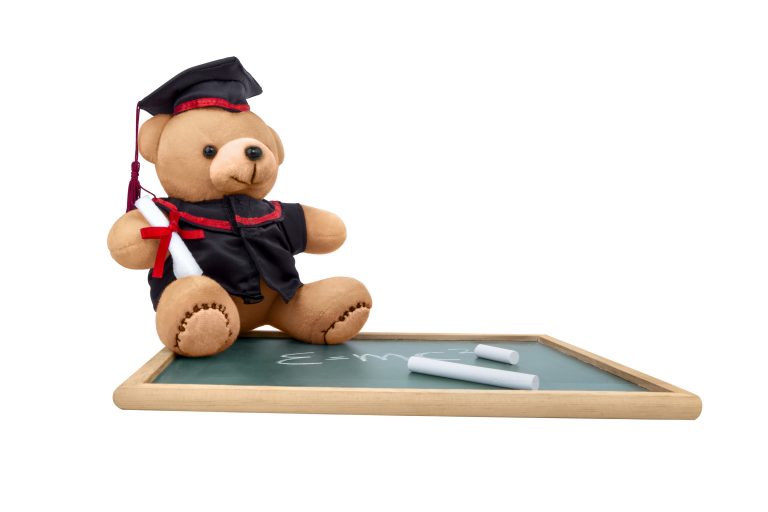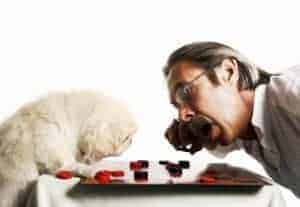At BETT this year, one of the biggest exhibitors with a vast amount of floor space was Microsoft. They had grouped together the various tools they have under their wings either directly or through acquisition. Teachers have for years been well ahead of the curve with using games for teaching and I often go to BETT to have a flavour of what will be coming our way in the corporate learning sector also. Some of the big themes in education seemed to be robots to help with a variety of subjects from coding to math, science and language learning. One presentation that stood out for me was from the Minecraft EDU team at Microsoft.
 I am a big advocate of learning through the means of quests. Minecraft EDU was showcasing how their version works to learn to code both through block linking and equally through using actual Javascript. Their newest release includes a chemistry teaching version. Just imagine the chemistry table that is traditionally on a wall as a tool to create boosters or fun dynamics in the game of Minecraft. By mixing a number of chemical substances students can create a purple sparkler for their character that can be used in the game. Equally combining gasses can create balloons, which you could then tie down. For the example, the presenter had created flying cows, which was quite amusing.
I am a big advocate of learning through the means of quests. Minecraft EDU was showcasing how their version works to learn to code both through block linking and equally through using actual Javascript. Their newest release includes a chemistry teaching version. Just imagine the chemistry table that is traditionally on a wall as a tool to create boosters or fun dynamics in the game of Minecraft. By mixing a number of chemical substances students can create a purple sparkler for their character that can be used in the game. Equally combining gasses can create balloons, which you could then tie down. For the example, the presenter had created flying cows, which was quite amusing.
From the teaching perspective, setting students on a quest to build a purple sparkler is much more appealing than having to explain which chemicals together will create purple sparks the old school way. From a students’ perspective it definitely more intrinsically motivating to be playing and as an added bonus learn about Chemistry.
In literature, schools had worked together across the globe to create a version of Verona, thanks to Shakespeare. Others have created replica’s of the pyramids in Egypt to learn about these structures. As a fun way of using the creations, you have the ability to export the object to anywhere and you could use it in an augmented reality way to have pictures in funny places or as a 3D teaching model.
From a gamification perspective, the learning quest to find an object to boost your gameplay is a great example of content-based gamification.





